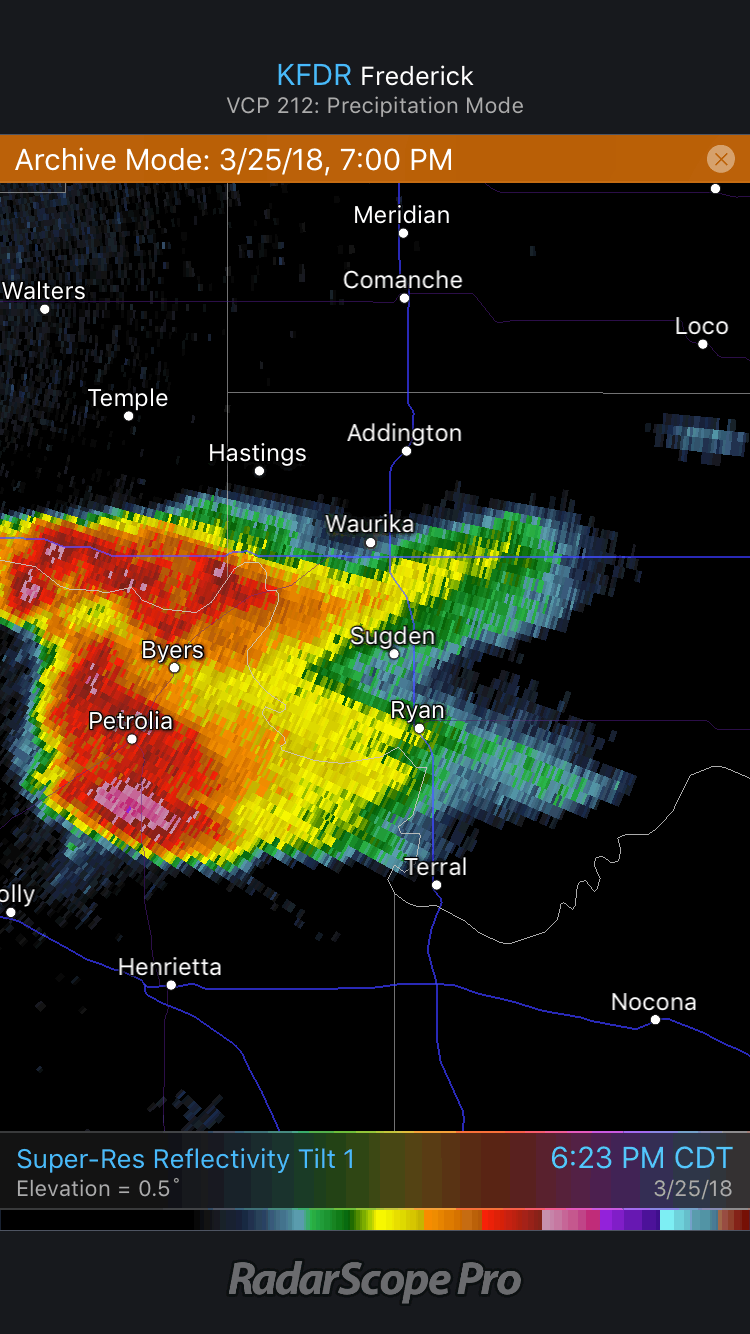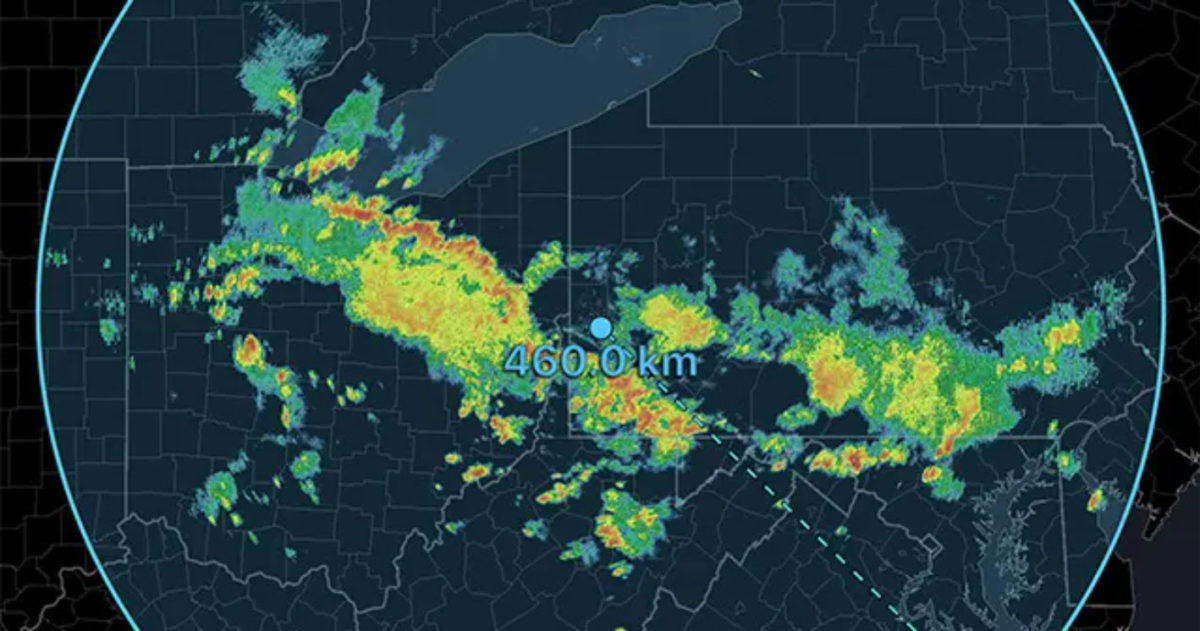When thunderstorms develop, they sometimes split into two. After the split, the new storms can have very different fates. Here’s why that happens.
Storm splitting occurs in environments with strong vertical shear. When winds change directions with height, the top of the storm can end up moving in the direction of the upper winds while the base of the storm will move in the direction of the winds closer to the ground. Within these storms, two areas of low pressure eventually develop causing a strong upward force created by the vertical pressure gradient. The upward moving air allows new updrafts to form, leading to the storm splitting. In the RadarScope image below, you can see this happening.
 Radar Loop of a Splitting Thunderstorm
Radar Loop of a Splitting Thunderstorm
Splitting typically occurs early in the storm’s life cycle. The northern thunderstorm is known as a left mover and rotates clockwise whereas the southern storm is called a right mover and rotates counter-clockwise. Both storms tend to be identical to each other, except for the motion. While the left mover moves faster, it tends to weaken and eventually dissipate as it moves into an environment with less moisture. The right mover typically moves into an environment of stronger shear and moisture inflow, becoming the dominant storm and producing more severe impacts.
The process of storm splitting can pose difficulties for both forecasters and spotters alike. To a forecaster, these splits can make predicting where a storm will track difficult. To spotters, splits can make safely positioning themselves to observe the thunderstorm difficult. Occasionally, the split storms can also merge with other existing storms, causing those storms to intensify further, and in some cases increase the tornado potential.








